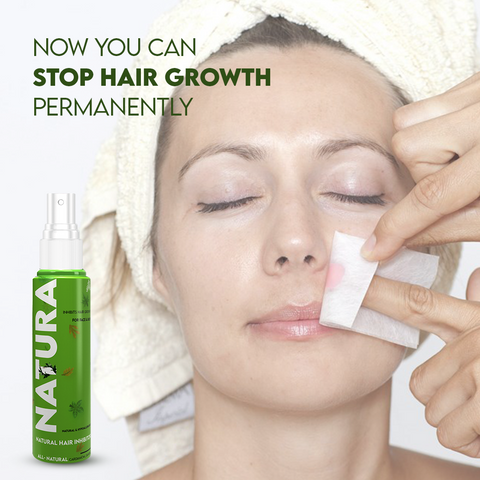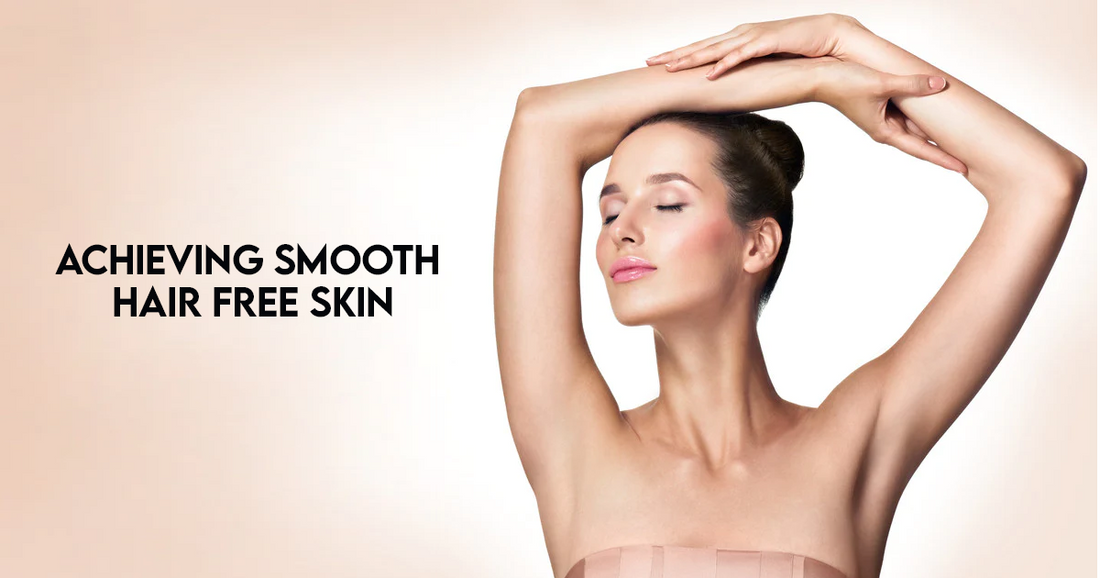Achieving smooth, hair-free skin is a common desire for many individuals, but with so many hair removal techniques available, it can be challenging to determine the most effective method. In this comprehensive guide, we will explore various hair removal techniques, focusing on permanent solutions and at-home options to help you achieve silky-smooth skin.
Understanding Permanent Hair Removal
Permanent hair removal refers to the process of eliminating unwanted hair from the body in a manner that prevents its regrowth for an extended period or permanently. Unlike temporary methods such as shaving or waxing, which only remove hair at the surface, permanent hair removal targets the hair follicle itself, preventing future growth.
How Permanent Hair Removal Works
Permanent hair removal works by targeting the hair follicle, the root of the hair. By damaging or destroying the follicle, the hair growth process is interrupted, preventing regrowth. There are several methods of permanent hair removal, including laser hair removal and electrolysis, each of which targets the follicle in different ways. Over time, with repeated sessions, permanent hair reduction is achieved as the follicles become inactive, resulting in smoother and hair-free skin.
Popular Hair Removal Techniques
Popular Hair Removal Techniques are:
Shaving
Shaving is one of the most common and accessible methods of hair removal. It involves using a razor to cut the hair off at the skin's surface. While shaving provides immediate results, the regrowth is rapid, typically within a few days, as it does not target the hair follicle.
Waxing
Waxing involves applying a layer of wax to the skin, allowing it to harden, and then quickly pulling it off, along with the hair. This method removes hair from the root, leading to smoother skin for a longer period compared to shaving. However, it can be painful and may cause skin irritation.
Sugaring
Similar to waxing, sugaring involves using a sticky paste made from sugar, lemon juice, and water to remove hair. It is gentler on the skin than waxing and is less likely to irritate. Sugaring is effective at removing hair from the root, resulting in longer-lasting smoothness.
Depilatory Creams
Depilatory creams contain chemicals that break down the proteins in the hair, causing it to dissolve and be easily wiped away. While depilatory creams provide quick and painless hair removal, the results are temporary, similar to shaving.
Laser Hair Removal
Laser hair removal utilizes concentrated beams of light to target and damage the hair follicles, inhibiting future hair growth. It is a long-term hair removal solution that offers permanent reduction after multiple sessions. Laser hair removal is effective for larger areas of the body and is suitable for various skin types.
Hair Growth Inhibitor
Hair growth inhibitors are substances or products designed to slow down or inhibit the growth of unwanted hair. They work by targeting the hair follicles, either by weakening them or reducing the rate of hair regrowth.

Benefits of Hair Growth Inhibitors
Reduced Hair Growth:
The primary benefit of hair growth inhibitors is a reduction in the rate of hair growth. With regular use, users may notice slower regrowth and finer hair texture.
Convenience:
Hair growth inhibitors are often easy to use and can be incorporated into regular skincare routines. They offer a convenient alternative to traditional hair removal methods like shaving or waxing.
Long-Term Results:
While not permanent, consistent use of hair growth inhibitors can lead to long-term reduction in hair growth. This can result in smoother skin for extended periods compared to other hair removal methods.
Removing Hair from Specific Areas
Removing unwanted hair from specific areas of the body requires careful consideration of the method and technique to ensure effective and safe results. Here's a closer look at removing hair from common areas such as the belly, legs, and hands, as well as safe techniques for sensitive areas:
Removing Belly Hair
Belly hair can be removed using various methods, including shaving, waxing, sugaring, or using depilatory creams. Shaving is a quick and painless option, but hair may grow back quickly. Waxing and sugaring provide longer-lasting results but may be more painful. Depilatory creams offer a painless solution but may cause skin irritation in some individuals. Incorporating hair growth inhibitors into your skincare routine can help reduce the frequency of hair removal sessions over time.
Removing Leg Hair
Leg hair removal methods include shaving, waxing, sugaring, epilation, or using laser hair removal devices. Shaving is the most common and accessible method, providing quick results but requiring frequent maintenance. Waxing and sugaring offer longer-lasting results but may be more painful. After hair removal, apply a hair growth inhibitor lotion or spray to the legs to slow down regrowth and prolong smooth skin.
Removing Hair from Hands
Hair removal from the hands can be achieved through shaving, waxing, or using a hair growth inhibitor. Shaving is a quick and painless option but may result in prickly regrowth. Waxing provides longer-lasting results but may be more painful and may not be suitable for sensitive skin. Apply a hair growth inhibitor gel specifically formulated for sensitive areas like the hands.
Safe Techniques for Sensitive Areas
Sensitive areas such as the bikini line, underarms, and face require gentle and safe hair removal techniques to avoid irritation or injury. Methods such as shaving, waxing, sugaring, or using depilatory creams can be used, but it's essential to choose products specifically formulated for sensitive skin and perform patch tests before use.

Tips for Effective Hair Removal
Achieving smooth, hair-free skin requires proper preparation, careful method selection, and diligent aftercare. Here are some essential tips to optimize your hair removal routine:
Choosing the Right Method
Consider Skin Sensitivity:
Choose a hair removal method that is suitable for your skin type and sensitivity.
Assess Hair Texture and Thickness:
Different hair removal methods are more effective depending on the texture and thickness of your hair.
Evaluate Treatment Area:
Consider the area of the body you are targeting for hair removal. Some methods may be more suitable for specific areas.
Aftercare Tips
Moisturize:
After hair removal, moisturize the skin to soothe irritation and restore hydration.
Avoid Sun Exposure:
Protect recently treated skin from sun exposure to prevent irritation and hyperpigmentation.
Exfoliate Regularly:
Incorporate regular exfoliation into your skincare routine to prevent ingrown hairs and keep the skin smooth.
Conclusion
In conclusion, achieving smooth, hair-free skin is a goal for many individuals, and understanding the various hair removal techniques is essential for finding the most effective method. From traditional methods like shaving and waxing to advanced options such as laser hair removal and hair growth inhibitors, there are numerous options available to suit different needs and preferences. Hair growth inhibitors offer a promising solution for individuals seeking long-term hair reduction and smoother, hair-free skin. Whether you choose at-home methods or professional treatments, the key is consistency and patience.



